Bookkeeping
now browsing by category
Discounted Cash Flow Analysis Your Complete Guide with Examples
Valuing stocks using DCF is pretty much the same method when valuing a company but you just take one extra step. The principle behind determining the correct discount rate to use is that the discount rate needs to adequately reflect the riskiness of the business being valued. This approach then becomes technically a multiple-based approach, because of the way it works. Practitioners assume the business is sold as a multiple of some financial metric like EBITDA, based on what they can see today for other businesses that were sold, and what these comparable trading multiples are.
Step 2. Discount Rate
When a company analyzes whether it should invest in a certain project or purchase new equipment, it usually uses its weighted average cost of capital (WACC) as the discount rate to evaluate the DCF. The WACC incorporates the average rate of return that shareholders in the firm are expecting for the given year. You can use this template to determine the enterprise value and share value of a public company based on discounted cash flow. You can insert your own numbers for certain variables and see how the estimated enterprise and stock values change. Analysts most often perform discounted cash flow analysis by inserting a company or investment’s cash flow-related numbers and projections into a spreadsheet of detailed formulas.
This present value can then be compared to the current market price of the stock in order to determine whether it is under- or overvalued. If the project had cost $14 million, the NPV would have been -$693,272. That would indicate that the project cost would be more than the projected return.
What Are Some Examples of Discounted Cash Flows?
We divide the value of the company by 10,000,000, so we get $9.88 per share. This gives us our own unique determination of what the share price should be. A lot of businesses use discounted cash flow analysis to determine which projects to invest in.
For example, if you’re trying to sell shares or your entire business, those working in investment banking will use the DCF method to determine the price. Financial analysts or project managers will use the DCF valuation method when valuing a project, such as a product launch or new shopfront. Once a total value is calculated, project managers can decide whether the investment is worth the cost. You can use this template to determine the value of a startup company based on discounted cash flow analysis.
Depends on Accurate Forecasting
Let’s say the discount rate, using the WACC, is 12% (so, this is a risky business – the higher the WACC, the riskier the business as investors expect to be compensated for taking on additional risk). Well, the DCF method uses a number called the Terminal Value to represent this assumed sum total. This Terminal Value is the number the DCF method uses to represent what the business is worth beyond your initial 3, 5, 10-year (etc.) forecast. It’s a very important number in a DCF analysis because it represents a large chunk of the total valuation amount. We need to know this sum total number so we can add it to the other three years of cash flows, to get the full value of the company’s entire are subject to life. So, using this method, we can say that $10 million in year 3 is actually only worth $7.5 million today.
- This is the rate of return you’d get if you invested your money today instead.
- Report on key metrics and get real-time visibility into work as it happens with roll-up reports, dashboards, and automated workflows built to keep your team connected and informed.
- The cheat sheet below includes important discounted cash flow formulas.
- For companies that use a mix of debt and equity funding, WACC is a weighted average cost of both types of capital.
Step 3 of 3
Discounted cash flow can help investors who are considering whether to acquire a company or buy securities. Discounted cash flow analysis can also assist business owners and managers in making capital budgeting or operating what is manufacturing resource planningmrp ii expenditures decisions. When assessing a potential investment, it’s important to take into account the time value of money or the required rate of return that you expect to receive.
The DDM is similar to the DCF model in that it estimates the intrinsic value of a stock by discounting future cash flows. However, the DDM only considers dividends while the DCF model considers all cash flows. The discounted cash flow (DCF) analysis, in financial analysis, is a method used to value a security, project, company, or asset, that incorporates the time value of money. Discounted cash flow analysis is widely used in investment finance, real estate development, corporate financial management, and patent valuation. Used in industry as early as the 1700s or 1800s, it was widely discussed in financial economics in the 1960s, and U.S. courts began employing the concept in the 1980s and 1990s. Discounted cash flow (DCF) is an analysis method used to value investment by discounting the estimated future cash flows.
A future cash flow might be negative if additional investment is required for that period. Discounted cash flow and net present value are not the same, though the two are closely related. After forecasting the expected cash flows, selecting a discount rate, discounting those cash flows, and totaling them, NPV then deducts the upfront cost of the investment from the DCF. For instance, if the cost of purchasing the investment in our above example were $200, then the NPV of that investment would be $248.68 minus $200, or $48.68.
Factors such as the company or investor’s risk profile and the conditions of the capital markets can affect the discount rate chosen. Below is an illustration of how the discounted cash flow DCF formula works. As you will see, the present value of equal cash flow payments is being reduced over time, as the effect of discounting impacts the cash flows. The DCF formula is used to determine the value of a business or a security. It represents the value an investor would be willing to pay for an investment, given a required rate of return on their investment (the discount rate).
Or, in a simplified analysis, you can also determine the internal rate of return through trial and error. Analysts figure the internal rate of return so they have an estimate on the rate of return they could get from an investment. They can then compare that rate of return to those of alternative investments.
In this article, we have referred to the discount rate to be used to discount the future cash flows as the Market Rate (r) or generally as the discount rate (d). As just explained, in a DCF analysis, you discount the future cash flows in order to value a company more accurately. Experts offer a number of tips for executing good discounted cash flow analysis.
Useful Barometer of a Company’s Objective Value
Depending on the type of project, some guesswork may be necessary here. It’s wise to use relatively conservative estimates and lean on past data from launches of similar projects or investments, where possible. The CAPM is used to estimate the required rate of return for an investment.
Incremental Cost: Definition, How to Calculate, and Examples

Thus if fixed incremental cost cost were to double, the marginal cost MC would not be affected, and consequently, the profit-maximizing quantity and price would not change. This can be illustrated by graphing the short run total cost curve and the short-run variable cost curve. Each curve initially increases at a decreasing rate, reaches an inflection point, then increases at an increasing rate. The only difference between the curves is that the SRVC curve begins from the origin while the SRTC curve originates on the positive part of the vertical axis.
- For example, the incremental cost of an employee’s termination includes the cost of additional benefits given to the person as a result of the termination, such as the cost of career counseling.
- Identifying such costs is very important for companies as it helps them decide whether the additional cost is in their best interest.
- The use of incremental analysis can help businesses identify the potential financial outcomes of one business action or opportunity compared to another.
- Incremental cost of capital is the weighted-average cost of new debt and equity issuances during a financial reporting period.
- Incremental costs help to determine the profit maximization point for a company or when marginal costs equal marginal revenues.
- However, incremental cost refers to the extra cost incurred as a result of the decision to expand output.
What’s a Limitation of Incremental Analysis?
When a company’s incremental cost of capital rises, investors take it as a warning that a company has a riskier capital structure. Investors begin to wonder whether the company may have issued too much debt given their current cash flow and balance sheet. A turning point in the rise of a company’s incremental cost of capital happens when investors avoid a company’s debt due to worries over risk. Unfortunately, this can result in investors pulling back from the company’s shares due to worries over the debt load or even dilution depending on how additional capital is to be raised.
- Therefore, the cost to produce the special order is $200 per item ($125 + $50 + $25).
- This allocation can even change in the future course of business of ABC Ltd. when supposedly, if it chooses to drop product ‘X,’ then product ‘Y’ or any other product might become the primary user of the cost.
- The overall cost incurred as a result of producing an additional unit of product is referred to as incremental cost.
- When the marginal social cost of production is less than that of the private cost function, there is a positive externality of production.
- When evaluating a business segment’s profitability, only relevant incremental costs that can be directly linked to the business segment are examined.
- Thus, the above are some benefits that the procedure of marginal cost analysis contributes to the entire manufacturing process.
Incremental Cost Vs Incremental Revenue
It is important to consider incremental cost when making decisions that involve increasing or decreasing production levels. For example, if a company is considering expanding its operations, it will need to compare the incremental cost of production with the expected revenue from selling the additional units. Only by taking both total cost and incremental cost into income statement account can businesses make informed decisions that will maximize their profits.
- Since incremental costs are the costs of manufacturing one more unit, the costs would not be incurred if production didn’t increase.
- Conversely, there may be levels of production where marginal cost is higher than average cost, and the average cost is an increasing function of output.
- If a business is earning more incremental revenue (or marginal revenue) per product than the incremental cost of manufacturing or buying that product, the business earns a profit.
- Bulk orders are frequently discounted, introducing a variable into your incremental calculation.
- A consumer may consume a good which produces benefits for society, such as education; because the individual does not receive all of the benefits, he may consume less than efficiency would suggest.
- It goes the opposite way when the marginal cost of (n+1)th is higher than average cost(n).
Decisions taken based on marginal costs
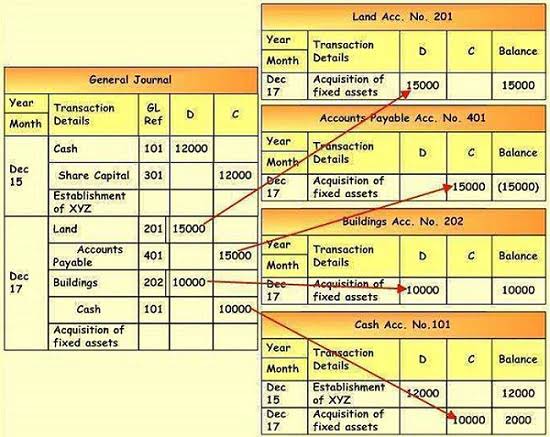
Incremental analysis is a decision-making tool used in business to determine the true cost difference between alternative business opportunities. As the name suggests, both are meant to calculate the cost and revenue for extra or addition production of goods and services. If we look at our above example, the primary user is product ‘X’ which was already being manufactured at the plant and utilizing the machinery and equipment.
Example of Incremental Analysis

Incremental cost is the total cost incurred due to an additional unit of product being produced. Incremental cost is calculated by analyzing the additional expenses involved in the production process, such as raw materials, for one additional unit of production. https://www.bookstime.com/ Understanding incremental costs can help companies boost production efficiency and profitability.
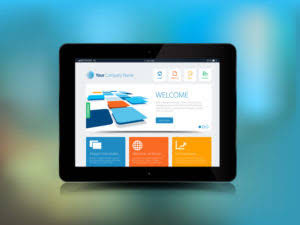
What is incremental cost and how is it calculated
Producing the products, however, might bring incremental costs because of the downsizing. The management must look at the additional cost of producing the products under one roof. This could mean more deliveries from vendors or even more training costs for employees. Essentially, the incremental cost is largely related to decisions and business decisions. The marginal cost is used to optimize output, whereas the incremental cost is used to determine the profitability of activities. This shows the incremental cost of scaling monthly production volumes by 5,000 units is $20,000.
Economies of scale apply to the long run, a span of time in which all inputs can be varied by the firm so that there are no fixed inputs or fixed costs. Conversely, there may be levels of production where marginal cost is higher than average cost, and the average cost is an increasing function of output. Since fixed costs do not vary with (depend on) changes in quantity, MC is ∆VC/∆Q.

Short run marginal cost is the change in total cost when an additional output is produced in the short run and some costs are fixed. On the right side of the page, the short-run marginal cost forms a U-shape, with quantity on the x-axis and cost per unit on the y-axis. Understanding a company’s incremental costs is important for decisions like setting pricing, production levels, make vs. buy, adding product features, and more. Manufactures look at incremental costs when deciding to produce another product. Often times new products can use the same assembly lines and raw materials as currently produced products. Unfortunately, most of the time when manufacturers take on new product lines there are additional costs to manufacture these products.
If the LRIC rises, it is likely that a corporation will boost product pricing to meet the costs; the inverse is also true. Forecast LRIC is visible on the income statement, where revenues, cost of goods sold, and operational expenses will be altered, affecting the company’s total long-term profitability. They are always composed of variable costs, which are the costs that fluctuate with production volume.
Free personal finance software, money management for everyone

PocketGuard is useful for users who want a convenient way to track spending and manage bills on their smartphones. Real-time insights help users stay aware of their Bookkeeping for Consultants financial situation. Budgeting features are primarily available on the mobile app, which might be inconvenient for some users. Last but arguably most importantly, a personal accountant reviews financial records for accuracy and compliance with the law. If you wrongly fill a form – say a tax form – the best case scenario is that you file an amend return with the IRS.
Best Personal Accounting Software Solutions for 2025
Likewise, you see the “big picture” of debt management and how each liability impacts your bottom line and, consequently, your future. Second among three types of accounts are personal accounts which are related to individuals, firms, companies, etc. A few examples are debtors, creditors, banks, outstanding accounts, prepaid accounts, accounts of customers, CARES Act accounts of goods suppliers, capital, drawings, etc. Additionally, suppose you want to get serious about investing your money. In that case, thinking long-term and working with a financial advisor who can help you evaluate potential opportunities and manage your accounts wisely is helpful.
- Additionally, editions of Quicken from the Premier level and higher offer Portfolio X-Ray®.
- Individuals are not required by law to keep financial books and records (businesses are), but not doing this can be a costly mistake from financial and tax perspectives.
- It is an online fiduciary financial advisor offering a host of money management and personal accounting tools free to anyone who needs them.
- This will put a spending limit to any indulgence and prioritise your most important bills.
- Since the bills or receipts are saved in the cloud, you can easily access any and all receipts or invoices.
- As a result, the capital will increase when gains and income get credited.
- Moreover, Mahadev Stone Works will be a part of the personal account.
What are the Three Types of Personal Accounts?
Credit accounts allow borrowing money but require repayment with interest. Understanding interest rates is crucial when dealing with savings, loans, and credit cards. Simply put, the three Golden Rules of Accounting are key to doing accounting right and keeping financial information reliable and easy to use.

Free Budget Spreadsheets
Rely on a mature software that benefits of 27 years of user suggestions and feedback; available in your language thanks to community translation. This provides limited assurance that financial statements comply with Generally Accepted Accounting Principles. Outsourced payroll means we take care of the numbers, so you can take care of your people. Efficient payroll processing to ensure compliance and employee satisfaction.
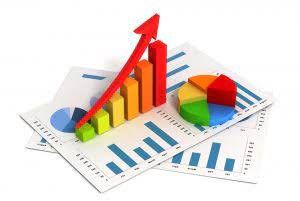
Plus, Moneydance distinguishes itself by accommodating various foreign currencies and even cryptocurrencies, making it ideal if you have international investment interests. Its mobile accessibility offers access to all modern users, so your banking data remains at your fingertips, whether you’re managing budgets or making online bill payments. GnuCash is desktop software; its features include tracking bank accounts, stocks, income, and expenses. GnuCash is based on double-entry accounting for balanced books and you can run a number of reports to see your financial data. GnuCash also offers small-business accounting tools that let you manage customers and vendors, handle invoicing and bill payment, and even payroll.
Quicken is one of the oldest personal accounting software programs still available today. This is why we created the list of the top 5 best personal accounting software for home use. These programs won’t cost you very much (in the case of Personal Capital, they’re free). Personal accounts help in budgeting, tracking expenses, and managing debts. Understanding how SEE Finance 2 reconciles accounts is not the most user-friendly process. But, users have noted the program’s speed and reliability which helps make up for the steeper learning curve.
- That beats much of the competing personal accounting software available today.
- Mint can really help you easily cope with your income and expenses, so you have a clear view of how much you have and what the margin of your spending abilities is.
- These accounts are related to human beings i.e. natural persons who are created by God.
- If you wrongly fill a form – say a tax form – the best case scenario is that you file an amend return with the IRS.
- Credit scores are like the gatekeepers to many financial opportunities in life, from buying a car to getting approved for a mortgage.

Users can easily move funds between envelopes and track remaining balances for each category. The extensive features and data analysis might be overwhelming for users who only need basic tools for daily financial transactions. Similarly, your accountant can talk to creditors, the IRS, credit card companies and even banks, and negotiate for a payment arrangement on your behalf. After all, the accountant knows how your finances look and will be objective when negotiating. But if you put that money into a life insurance policy, you get the entire sum ($300,000 plus interest). Long story short, a personal accountant will help you make good business decisions.
Exclusive features
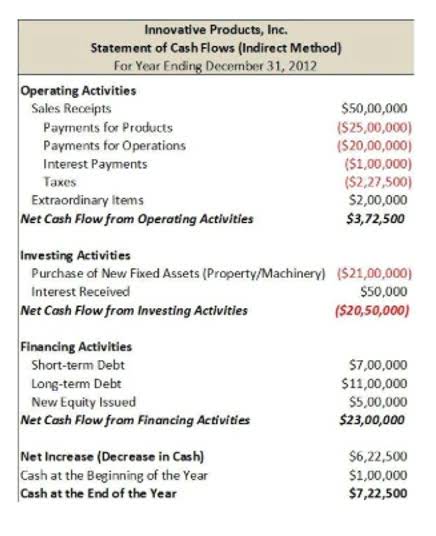
RichOrPoor posts a lengthy list of awards and recognitions on its website. Several 5-star reviews and ratings are prominently featured from a wealth of online reviewers. You do have the option of password-protecting your software, personal accounting however. This prevents intrusions by individuals in your home from whom you wish to prevent unwanted access.
All about the reimagined ProAdvisor Program Tax Pro Center Intuit

If you want to enhance your QuickBooks knowledge game, Global Link Asia proadvisor training Consulting offers a QuickBooks Online training course for beginners to advanced users. More and more accountants are signing up for the QuickBooks ProAdvisor Program. The benefits are truly worth getting as more than 8 million people worldwide are using QuickBooks for themselves and their businesses, and the number is getting larger by the day. Nothing is more important than customer trust in the business. These badges serve as a mark of credibility and expertise, instilling trust in potential clients.

What are the benefits of being a QuickBooks ProAdvisor?
As a certified QuickBooks ProAdvisor, you can leverage your newfound expertise by marketing yourself to potential clients. Highlight your ProAdvisor certification on your resume, LinkedIn profile, freelancer platform, and business website (ideally in your certification hub or your ProAdvisor profile). Once you create an account and provide the necessary information to get started. QuickBooks will grant you access to a wealth of resources, training materials, and support from the QuickBooks community. Before going on the journey to become a QuickBooks ProAdvisor, you should evaluate your current accounting knowledge and skills.
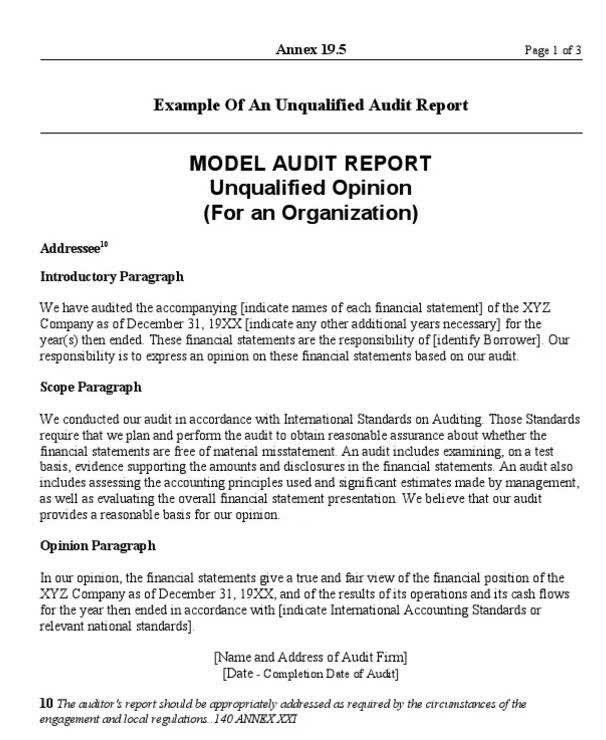
Credibility clients can see
- Support hours exclude occasional downtime due to system and server maintenance, company events, observed U.S. holidays and events beyond our control.
- Your dream practice begins with the basics—like adding clients and finding your favorite tools.
- You can take the exam up to three times if you don’t pass on your initial attempt.
- These PDFs are very valuable because the test is open book.
- Share tutorials and webinars that can help your clients get the most out of QuickBooks.
Some states don’t allow CPE credits for QuickBooks ProAdvisor training. State boards of accountancy have final authority on the acceptance of individual trainings for CPE credit. These professional organizations often have directories or referral services that connect businesses with qualified ProAdvisors in their area. By reaching out to these associations, you can tap into a network of trusted professionals who have been vetted by their peers.
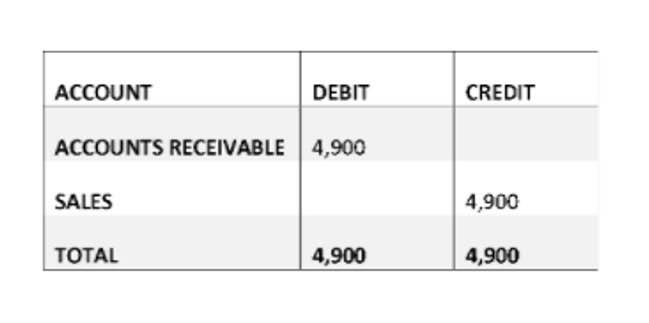
Step 1: Sign Up for QuickBooks Online Accountant Program
- While preparing, you can also earn CPE credits, which apply to maintaining your certified public accountant’s (CPA’s) license.
- The training outline helped us find the areas of the training that mapped to the exam questions.
- Trained accountants and bookkeepers manage financial complexities and offer practical business solutions.
- From within QuickBooks Online Accountant, you can manage your ProAdvisor account and certification.
- The Certification Exam is based on the QuickBooks Online training in your ProAdvisor training section.
You become familiar with the QuickBooks product line in depth. Your ProAdvisor credential indicates a better understanding of the software. https://www.bookstime.com/ It can assist you to advance your financial consulting business and gain client confidence as well as access to a network of new clients.
- To keep your ProAdvisor status, you need to complete continuing education and regularly pass recertification exams.
- In this day and age, being an accountant may not be enough to remain competitive.
- The program is designed to accommodate individuals with varying levels of expertise, from beginners to experienced accounting professionals.
- Her data-backed content empowers readers to make informed decisions and achieve real-world results.
- Now, ProAdvisors can see which team member is certified, which certifications they have, and when their certification expires.
Shubhnoor is a data analyst with a proven track record of translating data insights into actionable marketing strategies. She leverages her expertise in market research and product development, honed through experience across diverse industries and at Hevo Data. Currently pursuing a Master of Management in Artificial Intelligence, Shubhnoor is a dedicated learner who stays at the forefront of data-driven marketing trends.
- Custom bank feeds get rid of tedious data entry by downloading, categorizing, and updating transactions automatically in QuickBooks.
- For these reasons above, many companies (especially SMEs) often hire a ProAdvisor on an as-needed basis, instead of hiring a full-time bookkeeper or accountant, thus reducing overhead costs.
- A QuickBooks ProAdvisor is someone who has joined the QuickBooks ProAdvisor program and completed a certification test.
- Join our ongoing series of live webinars to learn all about the latest updates to the QuickBooks Online family of products, plus view exclusive new feature demos.
- Intuit reserves the right to change these hours without notice.
- If you add or remove services, your service fees will be adjusted accordingly.
Understanding QuickBooks: A Comprehensive Guide 101
With these automated marketing tools, you can save time, effort to focus https://www.instagram.com/bookstime_inc on working and getting more new deals. Now, you may ask, what are the benefits of becoming a real-deal QuickBooks ProAdvisor that so many people are signing up for? For these reasons above, many companies (especially SMEs) often hire a ProAdvisor on an as-needed basis, instead of hiring a full-time bookkeeper or accountant, thus reducing overhead costs. Like I said earlier, as with everything that is out there in the internet, there sometimes can be gremlins inside the Intuit servers.
10 Accounting Tips for Small Business Owners 2023

This will help you track the business-related expenditure and separate it from your personal finances. Develop a method of handling your data, actively managing your cash flow and reviewing your monthly and bank statement regularly. Organize your receipts (including receipts for charitable contributions) and accurately record deposits. Finally, you’ll run powered by adp review 2021 need to file your annual tax returns for yourself and your business.
Step 10: Run financial statements
Regular expense tracking will give you a better idea of how much you’re spending and help you devise money management strategies. If you’re managing inventory, set aside time to reorder products that sell quickly and identify others that are moving slowly and may have to be marked down or written off. You can skip this step if you’re not planning on hiring any employees. However, even if you’re only hiring an occasional contractor, you should have your payroll system set up. Now that you know the five main account types, you should begin to familiarize yourself with some other accounting basics.
If you set up your finances with accrual-basis accounting, you’ll record financial transactions when they occur, not when the money moves accounts. In addition to automating accounts payable and accurately tracking and balancing your books, cloud-based accounting software can often integrate with the other software you use. Sharing data across applications can reduce errors and save the time it would take to manually input data into your accounting evaluating business investments software. By tracking your business expenses, you can increase profit margins and optimize your income tax return. Instead of calculating expenses every two weeks for payroll processing, you can keep records of the everyday business expenses.
Whether you’re starting a brand-new business or you have some experience under your belt, creating a solid accounting plan can help you monitor and maintain your financial health. If you follow the tips we’ve laid out above, you’ll likely be able to focus some of your time on other important facets of your business. Remember that if you have employees, you’ll also need to account for payroll tax. If you’re unsure about your tax obligations, you may want to talk to a professional accountant or tax expert for advice. You’ve opened a business checking account, chosen your accounting method, and decided how you’re going to keep your books. However, many small businesses file estimated quarterly tax payments.
For example, you’ll use your personal tax return, Form 1040, to report business income and expenses on Schedule C if you’re a sole proprietor. If your business needs to charge and collect sales tax for the products you sell, you’ll likely need to make monthly payments to the appropriate state department. While accounting may not be what motivates you to go to work every day, it’s likely something you’ll encounter whether you do it yourself or outsource to an accounting firm. There are weekly, monthly, quarterly, and annual accounting tasks you need to complete to ensure your business’s success. Business accounting is the process of gathering and analyzing financial information on business activity, recording transactions, and producing financial statements. Before you can start recording any financial transactions, you’ll need to create a chart of accounts for your company.
Few small business owners are accounting experts, but to be successful, it helps to know a little about how to introduction to total return swaps do accounting for a small business. The difference between the two methods is how they record the inflow and outflow of cash. While you may be an expert at marketing or operations, don’t underestimate the importance of small business accounting. Without a clear financial picture, it can be difficult to move your business forward. Just as you may reconcile your personal checking account, you need to know that your cash business transaction entries are accurate and that you are working with the correct cash position. Cash flow management is critical and includes forecasting how much cash you will need in the coming weeks and months.
Accounting software was once cost-prohibitive for many small businesses, but now you can access robust accounting software for a monthly fee (or even for free). Open a business bank account and business credit card and run all your business’s income and expenses through those accounts rather than your personal checking account or credit card. A separate bank account makes it much easier to have a clean record of business transactions. While recording by hand may be the cheapest solution, it can be time-consuming and prone to errors.
Do You Need an Accountant for a Small Business?
Stay on top of your business’s finances and avoid common accounting pitfalls with our 10 helpful tips and tricks for small business owners. At the end of the month, quarter, or year (or any time in-between), you can generate financial reports from your accounting software. The key is to ensure every transaction is recorded correctly and in the right account. When you’ve just started and have limited funds, you might consider handling your accounting activities yourself.
Accounting Tips All Small Businesses Should Know
And if you send invoices or pay bills with your software, the numbers should sync automatically with your ledger. You should make sure you’re aware of the sales tax laws in your home state and for each state where you sell by obtaining copies of tax rules from a state’s department of taxation or revenue. You can also use software specializing in sales tax collection for small businesses, particularly ecommerce businesses that sell in many states. Small business owners, particularly ecommerce businesses that operate in many states, may want to consult an accountant or tax attorney about setting up a program that meets state laws. A business owner must stay on top of sales tax laws in the states where they operate or sell. Sales taxes apply in 45 states and the District of Columbia; in addition, 38 states collect local sales taxes.

Get Weekly 5-Minute Business Advice
- Using a comprehensive bookkeeping software program often becomes easier over time.
- And generally, no matter the plan or price, accounting software is more reliable than by-hand spreadsheet accounting.
- Note that you may need to make quarterly estimated tax payments if you expect to owe $1,000 or more when filing your annual tax return.
- Most reputable accounting software can streamline the accounting process by connecting to your bank account to ensure your financial statements reflect every transaction.
- You’ll also need to present up-to-date financial statements to lenders if you plan to apply for small business financing at some point.
Most reputable accounting software allows you to scan or snap a picture of receipts and other documents using your phone and attach it to the transaction. This content is for information purposes only and should not be considered legal, accounting, or tax advice, or a substitute for obtaining such advice specific to your business. No assurance is given that the information is comprehensive in its coverage or that it is suitable in dealing with a customer’s particular situation. Intuit Inc. does not have any responsibility for updating or revising any information presented herein.
Closing Entries: Step by Step Guide
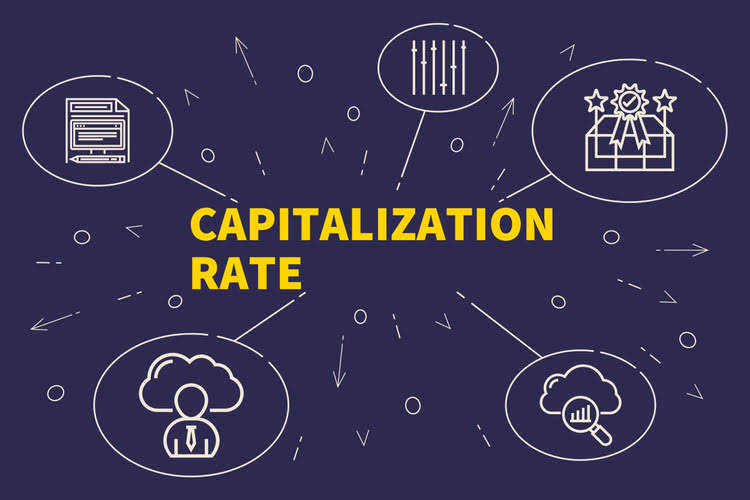
Since QuickBooks automates the year-end close, you don’t have to get caught up with all of these manual entries unless something was to go wrong. Even then you can get a bit of help or an accountant closing entries to sort you out. We’re firm believers in the Golden Rule, which is why editorial opinions are ours alone and have not been previously reviewed, approved, or endorsed by included advertisers.
How to Prepare Your Closing Entries

You have also not incurred any expenses yet for rent,electricity, cable, internet, gas or food. This means that thecurrent balance of these accounts is zero, because they were closedon December 31, 2018, to complete the annual accounting period. Our discussion here begins with journalizing and posting theclosing entries (Figure5.2). These posted entries will then translate into apost-closing trial balance, which is a trialbalance that is prepared after all of the closing entries have beenrecorded. After the closing journal entry, the balance on the drawings account is zero, and the capital account has been reduced by 1,300.
- All accounts can be classified as either permanent (real) ortemporary (nominal) (Figure5.3).
- Businesses can easily open and close accounts every period by using accounting software to track all financial transactions throughout a given period.
- Instead the balances in these accounts are moved at month-end to either the capital account or the retained earnings account.
- Closing entries are performed after adjusting entries in the accounting cycle.
- The closing entries serve to transfer these temporary account balances to permanent entries on the company’s balance sheet.
Preparing a Closing Entry

To determine the income (profit orloss) from the month of January, the store needs to close theincome statement information from January 2019. To further clarify this concept, balances are closed to assureall revenues and expenses are recorded in the proper period andthen start over the following period. As the drawings account is a contra equity account and not an expense account, it is closed to the capital account and not the income summary or retained earnings account. Suppose a business had the following trial balance before any closing journal entries at the end of an accounting period.
Step 1: Transfer Revenue
- Usually, where the accounting is automated or done using software, this intermediate income summary account is not used, and the balances are directly transferred to the retained earnings account.
- Retained earnings are those earnings not distributed to shareholders as dividends, but retained for further investment, often in advertising, sales, production, and equipment.
- These accounts, including examples like cash, accounts receivable, accounts payable, and retained earnings, carry their ending balances into the next accounting period and are not reset to zero, unlike temporary accounts.
- He has been the CFO or controller of both small and medium sized companies and has run small businesses of his own.
- Then, credit the income summary account with the total revenue amount from all revenue accounts.
Closing entries transfer the balances from the temporary accounts to a permanent or real account at the end of the accounting year. The accounts that remain in the accounting equation after closing are called permanent accounts. Assets, liabilities, common stock, and retained earnings are not closed at the end of the period because they are not used to measure activity for only one specific period. Only incomestatement accounts help us summarize income, so only incomestatement accounts should go into income summary. What is the current book value ofyour electronics, car, and furniture?

Cash Flow Statement: Demystified & Explained (For Beginners)
Temporary account balances can be shifted directly to the retained earnings account or an intermediate account known as the income summary account. Permanent accounts track activities that extend beyond the current accounting period. They’re housed on the balance sheet, a section of financial statements that gives investors an indication of a company’s value including its assets and liabilities. Now, our temporary accounts have been closed, and the net income of $30,000 has been added to Retained Earnings.
Accounting made for beginners
To get a zero balance in the Income Summaryaccount, there are guidelines to consider. All accounts can be classified as either permanent (real) ortemporary (nominal) (Figure5.3). Chartered accountant Michael Brown is the founder and CEO of Double Entry Bookkeeping. He has worked as an accountant and consultant for more than 25 years and has built financial models for all types of industries.
Trial Balance

Note that by doing this, it is already deducted from Retained Earnings (a capital account), hence will not require a closing entry. Take note that closing entries are prepared only for temporary accounts. Temporary accounts include all revenue and expense accounts, and also withdrawal accounts of owner/s in the case of sole proprietorships and partnerships (dividends for corporations). The retained earnings account is reduced by the amount paid out in dividends through a debit and the dividends expense is credited. The cyclical reporting of accounting periods can span monthly, quarterly, and annual time frames.
Closing Entry Shortcuts and Software Handling
- The income summary account is another temporary account, only used at the end of an accounting period.
- The beautiful thing is that some accounting programs like QuickBooks, make these entries for you.
- Now, it’s time to close the income summary to the retained earnings (since we’re dealing with a company, not a small business or sole proprietorship).
- A net loss would decrease retained earnings so we would do the opposite in this journal entry by debiting Retained Earnings and crediting Income Summary.
- Now for this step, we need to get the balance of the Income Summary account.
- Our program is specifically developed for you to easily set up your closing process and initiate book closing within seconds – no prior technical knowledge necessary.
Debt Ratio: Interpreting, Calculating, and Optimizing Financial Health
Then, they divide the latter by the former to derive the debt-to-asset ratio. This value helps the company’s top management and investors make effective decisions for the company and themselves. The ratio represents its ability to hold the debt and be in a position to repay the debt, if necessary, on an urgent basis.
Define Debt Ratio in Simple Terms
Depending on averages for the industry, there could be a higher risk of investing in that company compared to another. Some sectors, like utilities and real estate, often have higher ratios because businesses in these areas typically need substantial financing. Comparatively, technology companies may operate with lower ratios due to less reliance on borrowed funds. Up next, we’ll look at how you can use debt ratio in guiding your investment decisions. But before that, let’s prepare ourselves for the process of deciphering the implications of different debt ratios. It is important to evaluate industry standards and historical performance relative to debt levels.
There are instances where total liabilities are considered the numerator in the formula above. However, liability and debt being two different terms might lead to discrepancies in the values obtained. Whether debt and liabilities could be treated similarly would completely depend on the elements used to calculate the sum of the debts. Liabilities, on the contrary, are better when treated as a numerator for debt ratio with equity as a denominator. As businesses mature and generate steady cash flows, they might reduce their reliance on borrowed funds, thereby decreasing their debt ratios.
We and our partners process data to provide:
Its debt-to-equity ratio would therefore be $1.2 million divided by $800,000, or 1.5. Last, the debt ratio is a constant indicator of a company’s financial standing at a certain moment in time. Acquisitions, sales, or changes in asset prices are just a few of the variables that might quickly affect the debt ratio. As a result, drawing conclusions purely based on historical debt ratios without taking into account future predictions may mislead analysts. The concept of comparing total assets to total debt also relates to entities that may not be businesses. For example, the United States Department of Agriculture keeps a close eye on how the relationship between farmland assets, debt, and equity change over time.
Through the debt-to-asset ratio, the investors learn how financially stable a company is. Based on the evaluation, they decide whether it would be beneficial for them to invest in it. A debt ratio is a tool that helps determine the number of assets a company bought using debt. The ratio helps investors know the risk they will be taking if they invest in an entity having higher debt used for capital building. The ratio also lets them assess how fruitfully a company uses its debt to build and expand its business.
For example, in the example above, say XYZ reported $2.9 billion in intangible assets, $1.3 billion in PPE, and $1.04 billion in goodwill as part of its total $20.9 billion of assets. Therefore, the company had stock options more debt ($18.2 billion) on its books than all of its $15.7 billion current assets (assets that can be quickly converted to cash). If the calculation yields a result greater than 1, this means the company is technically insolvent as it has more liabilities than all of its assets combined.
Understanding a company’s debt profile is a critical aspect in determining its financial health. Too much debt and a company may be in danger of not being able to meet its interest and principal payments, as well as creating a strain on its finances. There is no one figure that characterizes a “good” debt ratio, as different companies will require different amounts of debt based on the industry in which they operate. For example, airline companies may need to borrow more money, because operating an airline requires more capital than a software company, which needs only office space and computers. In terms of risk, ratios of 0.4 (40%) or lower are considered better ones.
Part 2: Your Current Nest Egg
This ratio provides a snapshot of a company’s short-term liquidity and its ability to meet immediate financial obligations using its most liquid assets. The debt-to-total-asset ratio changes over time based on changes in either liabilities or assets. If there is a significant increase in total liabilities, then this will affect the debt-to-total asset ratio positively.
A financial professional will offer guidance based on the information provided and offer a no-obligation call to better understand your situation. In contrast, companies looking to expand want to be a forensic accountant or diversify might again increase borrowing, potentially raising the ratio. Understanding where a company is in its lifecycle helps contextualize its debt ratio. In this case, the company is not as financially stable and will have difficulty repaying creditors if it cannot generate enough income from its assets.
As the interest on a debt must be paid regardless of business profitability, too much debt may compromise the entire operation if cash flow dries up. Companies unable to service their own debt may be forced to sell off assets or declare bankruptcy. The debt ratio doesn’t reveal the type of debt or how much it will cost. The periods and interest rates of various debts may differ, which can have a substantial effect on a company’s financial stability. In addition, the debt ratio depends on accounting information which may construe or manipulate account balances as required for external reports.
- Often, the debt ratio is part of a larger group of financial ratios used to evaluate a company’s overall financial health.
- The debt ratio is the ratio of a company’s debts to its assets, arrived at by dividing the sum of all its liabilities by the sum of all its assets.
- You can calculate the debt ratio of a company from its financial statements.
- This conservative financial stance might suggest that the company possesses a strong financial foundation, has lower financial risk, and might be more resilient during economic downturns.
- Thus, this debt-to-asset ratio is expected to be less than 1 for investors to take an interest in investing in it and for creditors to rely on the entity for time repayments and default-free deals.
The total debt-to-total assets ratio compares the total amount of liabilities of a company to all of its assets. The ratio is used to measure how leveraged the company is, as higher ratios indicate more debt is used as opposed to equity capital. To gain the best insight into the total debt-to-total assets ratio, it’s often best to compare the findings of a single company over time or the ratios of similar companies in the same industry. As with all other ratios, the trend of the total debt-to-total assets ratio should be evaluated over time.
As noted above, a company’s debt ratio is a measure of the extent of its financial leverage. Capital-intensive businesses, such as utilities and pipelines tend to have much higher debt ratios than others like the technology sector. The debt-to-asset ratio also measures the financial leverage of the company. For example, if the firm has a higher level of liabilities compared to assets, then the firm has more financial leverage and vice versa.
Risks and Benefits of Varying Debt Ratios
This ratio shows the proportion of company assets that are financed by creditors through loans, mortgages, and other forms of debt. For example, imagine an industry where the debt ratio average is 25%—if a business in that industry carries 50%, it might be too high, but it depends on many factors that must be considered. Should all of its debts be called immediately by lenders, the company would be unable to pay all its debt, even if the total debt-to-total assets ratio indicates it might be able to. Every decision on a company’s debt ratio comes with its own set of rewards and risks.

